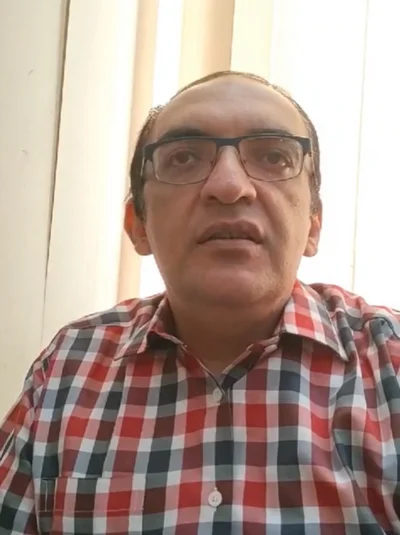The world of gaming is undergoing a revolutionary transformation, thanks to blockchain technology and the rise of Non-Fungible Tokens (NFTs). NFT games, also known as play-to-earn (P2E) games, allow players to own, trade, and monetize in-game assets securely and transparently. If you’re a developer, entrepreneur, or gaming enthusiast interested in building your own NFT game, you’re in the right place. This guide on how to create an NFT game in 2025 will walk you through every essential step, from concept to launch.
Understanding NFT Games

What is an NFT Game?
An NFT game integrates NFTs into its gameplay mechanics, enabling players to acquire unique digital assets such as characters, skins, weapons, or even virtual land. These NFTs are stored on a blockchain and can be sold or traded across platforms.
How NFT Games Work
Blockchain-based: Uses a decentralized ledger to verify and record transactions.
Smart Contracts: Automated rules and actions coded into the blockchain.
Tokenomics: Players earn native tokens or NFTs by participating in the game.
Benefits of Creating an NFT Game

- Ownership and Transparency
- Player Monetization
- Interoperability Between Games
- Increased Engagement and Retention
- Attractive to Investors and Communities
Step-by-Step Guide to Creating an NFT Game

1. Define Your Game Concept
Start with a solid idea. Decide:
Genre: RPG, strategy, card game, etc.
Target Audience: Casual gamers, crypto-savvy players, etc.
Core Gameplay: What makes your game engaging and unique?
NFT Use Cases: Which Assets Will Be Tokenized?
2. Choose the Right Blockchain
Popular choices include:
Ethereum: Most established but costly.
Polygon: Low fees, Ethereum-compatible.
Binance Smart Chain (BSC): Fast and affordable.
Solana: High speed, low cost.
Immutable X: Built for NFTs, no gas fees.
3. Design Game Architecture
Break it into layers:
Front-end: User interface and experience (UI/UX).
Back-end: Game logic, data storage.
Blockchain Layer: Smart contracts, wallet integration, NFT minting.
4. Create In-Game Assets
Design your NFT assets:
Characters
Items
Skins
Virtual Real Estate
5. Develop Smart Contracts
Write and deploy smart contracts that:
Mint NFTs
Facilitate marketplace transactions
Handle token rewards and staking
6. Tokenomics Design
Plan how your game’s economy will work:
Token Supply and Distribution
Earning Mechanics (e.g., play-to-earn, staking, farming)
In-Game Purchases and Fees
7. Integrate Wallets
Allow users to connect their crypto wallets:
MetaMask
Trust Wallet
WalletConnect
8. Build a Marketplace
A built-in or third-party NFT marketplace allows users to:
Buy/sell NFTs
View ownership history
Trade in-game assets
9. Test Your Game
Conduct:
Alpha Testing: The Internal team checks functionality.
Beta Testing: Invite real users for feedback.
10. Launch and Market Your Game
List your game on platforms like DappRadar.
Run campaigns on Discord, Twitter, and Telegram.
Collaborate with NFT influencers and communities.
Basic NFT Game Model

A simple NFT game model includes the following elements:
- Game Genre: Card trading game
- NFT Assets: Each card is a unique NFT with attributes such as power, rarity, and character class
- Game Flow:
- Players register and connect their wallets
- Players receive a starter pack of NFT cards
- Matchmaking allows PvP card battles
- Winners earn tokens and new NFT cards
- Smart Contracts: Handle minting, battles, rewards, and trades
- Marketplace: In-game marketplace for buying, selling, and trading cards
- Monetization: Entry fees for tournaments, sale of booster packs, transaction fees
Best Practices and Tips

Security First
Smart contracts are irreversible. Conduct security audits.
Community Building
Build hype pre-launch with teasers, giveaways, and beta access.
Sustainability
Ensure your game isn’t purely speculative. Focus on engaging gameplay.
Regulatory Compliance
Check legal frameworks for NFTs, tokens, and digital currencies in your region.
Top Tools and Platforms for NFT Game Development

- Unity / Unreal Engine: Game development engines
- Moralis / Thirdweb: Backend blockchain tools
- OpenZeppelin: Secure smart contract libraries
- Pinata / IPFS: Decentralized file storage
- Alchemy / Infura: Blockchain API services
Cost to Develop an NFT Game

Costs vary based on complexity:
- Simple Game: $10,000 – $50,000
- Medium Complexity: $50,000 – $150,000
- AAA Game: $200,000+
Include costs for smart contracts, design, game engine licenses, team salaries, audits, and marketing.
Examples of Successful NFT Games

Axie Infinity
- Pioneered the play-to-earn model.
- Millions of players worldwide.
Gods Unchained
- Free-to-play card game.
- Uses Immutable X.
The Sandbox
- Metaverse game.
- Buy/sell land as NFTs.
Future Trends in NFT Gaming

- Cross-Game NFTs: Shared assets across platforms.
- AI Integration: Smarter NPCs and dynamic content.
- AR/VR Support: Immersive experiences.
- DAO Governance: Players influence game decisions.
Conclusion
Creating an NFT game in 2025 is a promising venture that combines creativity, technology, and community. From defining your concept to launching a fully functional blockchain-integrated game, each step requires thoughtful planning and execution. By following this comprehensive guide on how to create an NFT game, you can tap into the next frontier of gaming and deliver a product that stands out in a crowded digital landscape.
If you’re ready to bring your vision to life, contact us, SDLC CORP, and let our expert team help you build your NFT game from the ground up.
Know More About Our Game Development Services.
FAQ's
What is an NFT Game?
An NFT game incorporates non-fungible tokens into its core mechanics, allowing players to own, trade, and earn real-world value from in-game assets.
Do I Need to Know Coding to Create an NFT Game?
While technical skills are helpful, platforms and tools like Unity, Moralis, and pre-built smart contract libraries can reduce complexity. Hiring a development partner like SDLC CORP is also a great option.
What Blockchain is Best for NFT Game Development?
Popular choices include Ethereum, Polygon, Binance Smart Chain, Solana, and Immutable X. Each has its benefits related to cost, speed, and scalability.
How Do Players Earn Money in an NFT Game?
Players can earn tokens through gameplay, staking, trading NFTs, or participating in special events and battles.
How Much Does It Cost to Develop an NFT Game?
Development costs can range from $10,000 to over $200,000, depending on complexity, features, and technology stack.
Why Choose SDLC CORP for NFT Game Development?
SDLC CORP offers end-to-end blockchain game development services, including smart contract creation, wallet integration, tokenomics design, and post-launch support.
















